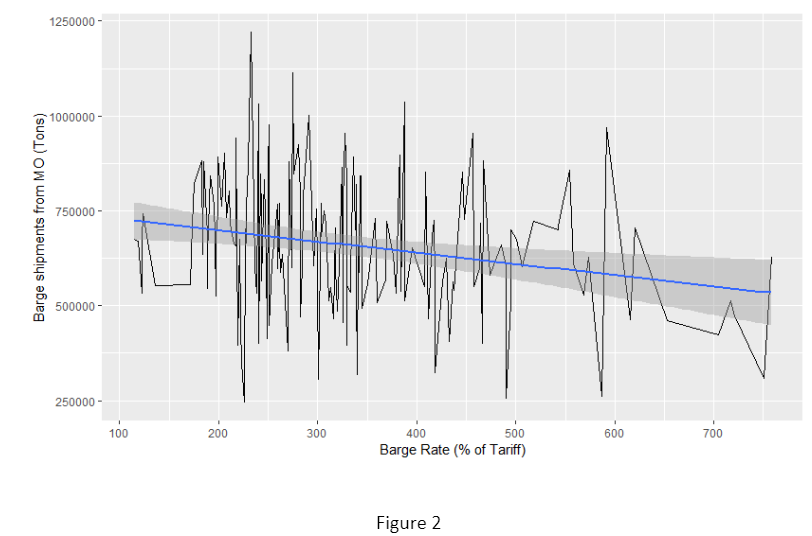As in the last article we talked about the common modes of transportation for agricultural commodities in the State of Missouri are truck, rail, ship, and multiple mode, with descending order, which multiple mode is defined as multiple modes and by parcel delivery services, U.S. Postal Service, or couriers by Freight Analysis Framework. The relationships among these three major modes, truck, rail, and ship, are both cooperation and competition. Since the truck rate is influenced by a lot of other variables other than demand, such as labor market for drivers, customer loyalty, vehicle capacity, government regulation, etc., it is tricky to involve the truck rate into the demand equation estimation system. We created two demand equations based on literature and insights of our data, then applied statistical methods to estimate the relationship between rail rate and barge rate.
We continue using the state of Missouri as an example. The methodology can be applied to any other states. Data used in this analysis was downloaded from USDA-AMS, Bureau of Transportation statistics, Freight Analysis Framework (Version 4), and requested from a private data source for the rail rates.
Figure 1 shows a negative relationship between barge rates and rail rates. And Figure 2 shows the relationship between the barge rates and barge shipment tonnages. As the barge rate increases, the volume of barge shipments decline. In other words, as the barge shipment tonnage increases, the barge rate decrease.


From the two demand equations we obtained the conclusions:
- Barge Demand Equation:
The previous month barge rate has a statistically significant positive effect on current month barge rate. There is a statistically significant negative relationship between the current barge rate and total next month barge shipments. The higher the barge rate, the lower the quantity demand for barge shipments. Barge rate is significantly positive influenced by the level of export shipments from the Gulf. Additionally, we found the other two variables, seasons (defined as an indicator variable) and the Pacific Northwest to Gulf corn price spread, have significantly effect on the barge rate.
- Rail Demand Equation:
The previous month rail rate has a significant positive effect on current month rail rates. The estimates for current barge rate and the next month’s Missouri to Gulf rail shipments show unexpected negative signs. On the other hands, the two-month lagged Pacific Northwest to Gulf corn price spreads shows a significant positive influence on rail rates. This shows that the rail rates will be higher when there is a significant spread between the Gulf prices and Pacific Northwest prices and derives more rail demand to transport grains from Missouri. All other variables including season indicator do not show any statistical significance in the rail demand equation.
For more details on the Missouri Commodity Flow study or if you’d like to have it completed for your state, please contact us.

